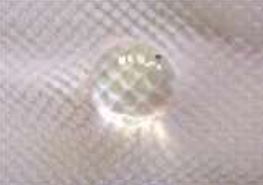Pharmacological Profile of Yashtimadhu in Urdwajaturu Vikara - A Synergistic View of Ayurveda and Modern Science
DOI:
https://doi.org/10.21760/jaims.10.7.13Keywords:
Yashtimadhu, Urdhwajatru, Glycyrrhizin, RasayanaAbstract
In present era, traditional medicines are gaining global recognition for their significant therapeutic potential and holistic approach to healing. There are many plants having great therapeutic significance. Yashtimadhu (Glycyrrhiza glabra Linn.) is a significant and widely utilized classical herbal medicinal plant, extensively referenced in the Vedas and Samhitas for its broad therapeutic applications. It possesses numerous phytochemical constituents such as glycyrrhizin, glycyrrhetinic acid, asparagine, isoflavones, and triterpenoids, which exhibit potent pharmacological effects. These constituents contribute to its efficacy in managing various diseases, particularly those affecting the head and neck region, Renowned for its Rasayana (rejuvenating) properties, Yashtimadhu plays a multifaceted role in promoting the overall health of organs located above the clavicle. The primary active component of Yashtimadhu, glycyrrhizin, constitutes about 2–9% of the root, while glycyrrhetinic acid is present in concentrations ranging from 0.5–0.9%. Other important constituents include flavonoids, chalcones, coumarins, sterols, amino acids, amines, lignans, gums, and volatile oils. These phytochemicals offer a broad spectrum of pharmacological actions, such as anti-ulcer, wound healing, anti-inflammatory, antioxidant, anti- tussive, and cognitive function enhancing activities, along with benefits in managing eye disorders.[1] This study endeavors to provide conceptual and analytical review of efficacy of Yashtimadhu in Urdhwajatrugata Vikaras by drawing insights from various Ayurvedic literature source as well as contemporary scientific perspectives to highlight its therapeutic potential.
Downloads
References
Prajapati Shashikant M, Patel Bhupesh R. Phyto- Pharmacological Perspective of Yashtimadhu (Glycyrrhiza glabra Linn.) – A Review. International Journal pf Pharmaceutical & Biological Archives (IJPBA), 2013; 4(5): 833-841
Burillon C, Chiambaretta F, Pisella PJ. Efficacy and safety of glycyrrhizin 2.5% eye drops in the treatment of moderate dry eye disease: results from a prospective, open-label pilot study. Clin Ophthalmol. 2018 Dec 14;12:2629- 2636. doi: 10.2147/OPTH.S186074. PMID: 30587909; PMCID: PMC6300369.
Aung K.H, Liu H, Ke Z, Jiang S, Huang J. Glabridin Attenuates the Retinal Degeneration Induced by Sodium Iodate in Vitro and in Vivo. Frontiers in Pharmacology. 2020; 11; 566699
Solanki H.J, Jani D, Bhogayata K, Singh S. A Comprehensive Review on Yashtimadhu (Glycyrrhiza Glabra Linn.) from Brihattrayi with Special Reference to Kalpana. J. Pharm. Sci. Innov. 2020; 9(3); 88-94
El-Saber Batiha G, Magdy Beshbishy A, El-Mleeh A, Abdel-Daim M.M, Prasad Devkota H. Traditional Uses, Bioactive Chemical Constituents, and Pharmacological and Toxicological Activities of Glycyrrhiza Glabra L. (Fabaceae). Biomolecules. 2020;10(3);352
Amal S Chandran, Syam R J, Jojan J Jerone, Sreeja Kaimal V Ethnopharmacological study about Glycyrrhiza glabra L. (Licorice) based on Ayurveda, An Indian System of Traditional Medicine- A Review International Journal of Ayurvedic Medicine, Vol 13 (3), 2022; 588-600
Joshi H, Nishteswar K, AnilKumar D. Review of Glycyrrhiza Glabra (Yastimadhu) -A Broad Spectrum Herbal Drug. Pharma Science Monitor. 2012; 3(4); 3171-3195
Lakshmi T., Geetha RV. Glycyrrhiza glabra commonly known as licorice- a therapeutic review. International Journal of Pharmaceutics and Pharmaceutical Sciences 2011; 3: 20-25.
Lavekar GS, Padhi MM. Database on Medicinal Plants used in Ayurveda and Siddha. Vol. 3. CCRAS (Central Council for Research in Ayurveda & Siddha) Dept. of Ayush; Govt. of India; 2003; 562–6p.
Li W, Asada Y, Yoshikawa T. Flavonoid Constituents from Glycyrrhiza glabra Linn Hairy Root Cultures. Phytochemistry. 2000; 55(5): 447–56p.
Obolentseva GV, Litvinenko VI, Ammosov AS, et al. Pharmacological and therapeutic properties of licorice preparations (a review). Pharm Chem J 1999;33:24-31.
Yamamura Y, Kawakami J, Santa T, et al. Pharmacokinetic profile of glycerrhizin in healthy volunteers by a new high-performance liquid chromatographic method. J Pharm Sci 1992;81:1042-1046.
Vaya J, Belinky PA, Aviram M. Antioxidant constituents from licorice roots: isolation, structure elucidation and antioxidative capacity toward LDL oxidation. Free Radic Biol Med 1997;23:302-313.
Tamir S, Eizenberg M, Somjen D, et al. Estrogenlike activity of glabrene and other constituents isolated from licorice root. J Steroid Biochem Mol Biol 2001;78:291-298.
Van Rossum TG, Vulto AG, Hop WC, Schalm SW. Glycyrrhizin-induced reduction of ALT in European patients with chronic hepatitis C. Am J Gastroenterol 2001;96:2432-2437.
Tsubota A, Kumada H, Arase Y, et al. Combined ursodeoxycholic acid and glycyrrhizin therapy for chronic hepatitis C virus infection: a randomized controlled trial in 170 patients. Eur J Gastroenterol Hepatol 1999;11:1077-1083.
Iino S, Tango T, Matsushima T, et al. Therapeutic effects of stronger neo- minophagen C at different doses on chronic hepatitis and liver cirrhosis. Hepatol Res 2001;19:31-40.
Stormer FC, Reistad R, Alexander J. Glycyrrhizic acid in liquorice – evaluation of health hazard. Food Chem Toxicol 1993;31:303-312.
Walker BR, Edwards CR. Licorice-induced hypertension and syndromes of apparent mineralocorticoid excess. Endocrinol Metab Clin North Am 1994;23:359-377.
Atharvaveda6/102/3, ibidem(2), 6/103/3
Hattori M, Sakamoto T, Yamagishi T, et al. Metabolism of glycyrrhizin by human intestinal flora. II. Isolation and characterization of human intestinal bacteria capable of metabolizing glycyrrhizin and related compounds. Chem Pharm Bull (Tokyo) 1985;33:210-217.
Akao T, Akao T, Hattori M, et al. Hydrolysis of glycyrrhizin to 18 beta- glycyrrhetyl monoglucuronide by lysosomal beta-Dglucuronidase of animal livers. Biochem Pharmacol 1991;41:1025-1029.
Ploeger B, Mensinga T, Sips A, et al. The pharmacokinetics of glycyrrhizic acid evaluated by physiologically based pharmacokinetic modeling. Drug Metab Rev 2001;33:125-147.
Yamamura Y, Kawakami J, Santa T, et al. Pharmacokinetic profile of glycerrhizin in healthy volunteers by a new high-performance liquid chromatographic method. J Pharm Sci 1992;81:1042-1046.
Rajagopala M, Ravishankar B, Ashok BK, Varun BG. Prevention of in vitro glucose-induced cataract by Vasanjana prepared by Yashtimadhu Kalka (paste of Glycyrrhyza glabra Linn). Ayu. 2020 Apr-Jun;41(2):136-141. doi: 10.4103/ayu.AYU_99_20. Epub 2021 Oct 23. PMID: 34908799; PMCID: PMC8614204.
Shah SL, Wahid F, Khan N, Farooq U, Shah AJ, Tareen S, Ahmad F, Khan T. Inhibitory Effects of Glycyrrhiza glabra and Its Major Constituent Glycyrrhizin on Inflammation-Associated Corneal Neovascularization. Evid Based Complement Alternat Med. 2018 Apr 23;2018:8438101. doi: 10.1155/2018/8438101. PMID: 29849730; PMCID: PMC5937553.
Najafi S, Koujan SE, Manifar S, Kharazifard MJ, Kidi S, Hajheidary S. Preventive Effect of Glycyrrhiza Glabra Extract on Oral Mucositis in Patients Under Head and Neck Radiotherapy: A Randomized Clinical Trial. J Dent (Tehran). 2017 Sep;14(5):267-274. PMID: 29296112; PMCID: PMC5748454.
Upadhyay S, Ghosh AK, Singh V. Hair Growth Promotant Activity of Petroleum Ether Root Extract of Glycyrrhiza Glabra L (Fabaceae) in Female Rats. Trop J Pharm Res 2012; 11(5):753-758 doi: 10.4314/tjpr.v11i5.8
Poswillo D, Partridge M. Management of recurrent aphthous ulcers. Br Dent J 1984;157:55-57.
Das SK, Das V, Gulati AK, Singh VP. Deglycyrrhizinated liquorice in apthous ulcers. J Assoc Physicians India 1989;37:647.
Da Nagao Y, Sata M, Suzuki H, et al. Effectiveness of glycyrrhizin for oral lichen planus in patients with chronic HCV infection. J Gastroenterol 1996;31:691-695.
He J, Chen L, Heber D, Shi W, Lu Q.Y. Antibacterial Compounds from Glycyrrhiza Uralensis. Journal of Natural Products. 2006; 69(1); 121-124
Sidhu P, Shankargouda S, Rath A, Hesarghatta Ramamurthy P, Fernandes B, Kumar Singh A. Therapeutic Benefits of Liquorice in Dentistry. Journal of Ayurveda and Integrative Medicine. 2020; 11(1); 82-88
Utsunomiya T, Kobayashi M, Ito M, Pollard R.B, Suzuki F. Glycyrrhizin Improves the Resistance of Maids Mice to Opportunistic Infection of Candida Albicans through the Modulation of Maids-Associated Type 2 T Cell Responses. Clinical Immunology. 2000; 95(2); 145-155
Motsei M.L, Lindsey K.L, Van Staden J, Jäger A.K. Screening of Traditionally used South African Plants for Antifungal Activity against Candida Albicans. Journal of Ethnopharmacology. 2003; 86(2); 235-241
Lee J.Y, Lee J.H, Park J.H, Kim S.Y, Choi J.Y, Lee S.H, et al. Liquiritigenin, a Licorice Flavonoid, helps Mice Resist Disseminated Candidiasis due to Candida Albicans by Th1 Immune Response, whereas Liquiritin, its Glycoside form, does not. International Immunopharmacology. 2009; 9(5); 632-638
Wittschier N, Faller G, Beikler T, Stratmann U, Hensel A. Polysaccharides from Glycyrrhiza Glabra L. exert significant anti-adhesive effects against Helicobacter pylori and Porphyromonas gingivalis. Planta medica. 2006; 72(11); 238
Burgess J.A, Van Der Ven P.F, Martin M, Sherman J, Haley J. Review of over-the-Counter Treatments for Aphthous Ulceration and Results from use of a dissolving oral patch containing Glycyrrhiza Complex Herbal Extract. J. Contemp. Dent. Pract. 2008; 9(3); 88-98
Martin M.D, Sherman J, van der Ven P, Burgess J. A controlled trial of a dissolving oral patch concerning Glycyrrhiza (licorice) herbal extract for the treatment of aphthous ulcers. Gen. Dent. 2008: 56(2); 206-210















